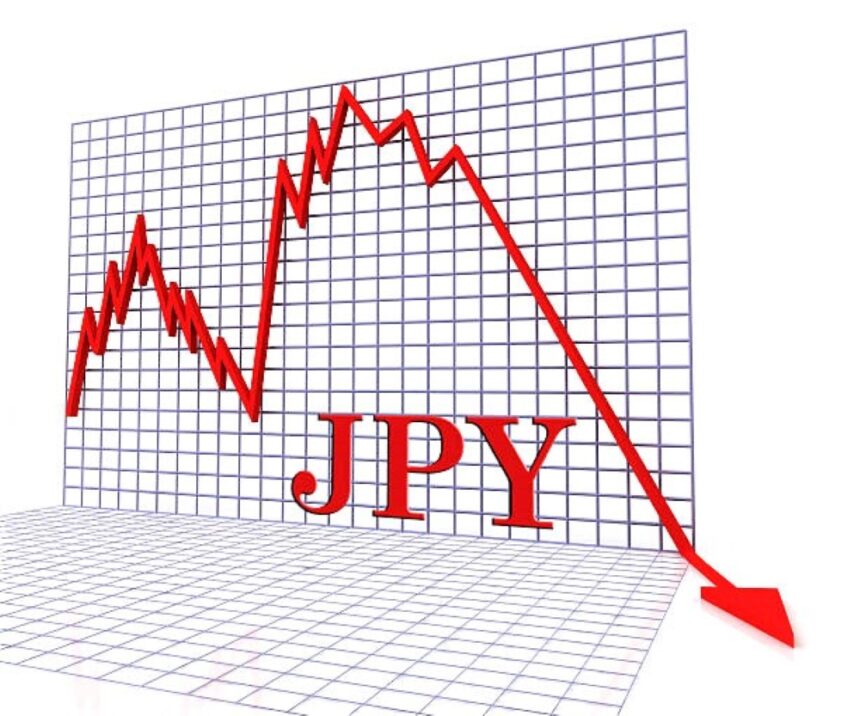Japanese yen remains near its lowest level against the US dollar since November 28.
The Japanese yen (JPY) is under strong selling pressure on Friday. Falling to its lowest level since November 28 against the US dollar (USD) heading into the European session. Data released earlier today revealed that inflation in Japan dropped as expected. Reinforcing market forecasts that the Bank of Japan will push back the plan to shift away from its ultra-dovish policy stance. This, combined with a generally upbeat tone in the equities markets, is seen as eroding the JPY’s relative safe-haven position.
Reduced bets on a March Fed rate decrease and increasing US bond yields benefit USD bulls.
Furthermore, the Federal Reserve’s (Fed) dwindling prospects for more aggressive policy easing continue to drive up US Treasury bond yields. The resulting widening of the US Japan rate difference helps to drive flows away from the JPY. Meanwhile, incoming US macro data indicated to a strong economy. Giving the US central bank greater space to maintain interest rates higher for longer. This helps the USD to remain near a one-month high and serves as a tailwind for the USDJPY pair.
Japanese consumer inflation falls as expected, reinforcing betting on a BoJ status quo.
Traders now focus at the US economic docket. Which includes the release of preliminary Michigan consumer sentiment and inflation expectations. As well as existing home sales. Aside from that, comments by important FOMC members and US bond yields will affect USD price dynamics and provide a boost to the USDJPY pair. The attention, however, will remain on the highly anticipated Bank of Japan monetary policy meeting on January 22-23. Which should assist determine the JPY’s near term trend.
Daily Market Movers: Japanese Yen drops further as decreasing inflation relieves pressure on BoJ.
The Japanese yen falls to an almost two month low against the US dollar as more people believe the Bank of Japan will maintain its accommodative policies.
The Statistics Bureau revealed that the headline Consumer. The Price Index (CPI) fell from 2.8% YoY to 2.6% in December, reaching its lowest level since June 2022.
Japan’s core inflation rate, which excludes volatile fresh food prices. Fell even more from 2.5% in November to 2.3%, the lowest since July 2022.
This follows the New Year’s Day earthquake in Japan and dismal wage growth figures, assuring that the Bank of Japan will maintain its ultra-dovish attitude.
Japan’s Finance Minister, Shunichi Suzuki, stated that the government is closely monitoring foreign exchange events, but did little to provide relief to JPY bulls.
Investors significantly reduced expectations on an early rate cut by the Federal Reserve after data on Thursday revealed that jobless claims plummeted to its lowest level since September 2022.
The solid labor-market report, together with buoyant US retail sales figures on Wednesday, indicated a still-resilient economy and lowered expectations for a Fed cut in March.
According to the CME Group’s FedWatch Tool, the markets are now pricing in a 57% possibility of an interest rate drop at the March FOMC meeting, down from 75% a week earlier.
In the most recent geopolitical developments, Iranian-backed Houthi terrorists in Yemen fired two anti-ship ballistic missiles at a US-owned, Greek-operated tanker ship on Thursday.
The potential of additional escalation of military action in the Middle East may boost the JPY’s safe-haven reputation while limiting any major upside for the USDJPY pair.
Traders now look at the US macro statistics Preliminary Michigan Consumer Sentiment. And Inflation Expectations, as well as Existing Home Sales – provide a new impetus.
Meanwhile, the market’s focus will be on the impending BoJ monetary policy meeting. Which will have a significant impact on near-term JPY price trends.









